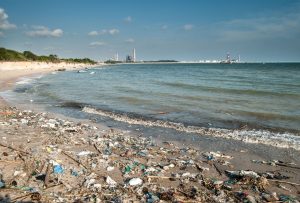Biodegradable plastic should not be ruled out as a solution
What is the effect of biodegradable plastic on the ocean litter problem? This is the subject of a recent study by UNEP, the environmental programme of the United Nations. One of the conclusions was that biodegradable plastics do not offer the solution to these problems. Although I largely agree with the statements in the UNEP report, it would be a pity if they were taken out of context.
In its report – ‘Biodegradable Plastics and Marine Litter. Misconceptions, concerns and impacts on marine environments’ – UNEP writes that the adoption of plastic products labelled as ‘biodegradable’ will not bring a significant decrease either in the quantity of plastic entering the oceans or the risk of physical and chemical impacts on the marine environment. These conclusions are generally speaking correct. Nevertheless, I would like to underline that biodegradable plastic has its uses too.
Biodegradability: just one of the product characteristics
Firstly, the biodegradability of plastics is a complex issue. Realise that it is just one of the product characteristics. If we were to make biodegradability a product requirement, it could impact other requirements such as strength and flexibility. In addition, the biodegradability of plastic at sea is a different story. Saline water, for example, is a natural preservative, and the biological break down in deep waters may be very different than in surface water. A material that breaks down at sea will require a much longer time than in, say, forest soil or water treatment installations. It is therefore a misconception to think that biodegradable plastics immediately disappear once they enter the sea, and are therefore the perfect solution to the issue of plastic litter in the ocean. The global prevention of litter, proper waste management and public awareness are much more important aspects to address in order to tackle the problems with marine litter.
Useful for specific applications
This does not mean, however, that biodegradability cannot be a useful characteristic for specific applications. Take the packaging of fresh vegetables, for instance. Once the use-by date of the product has passed, companies first have to separate the packaging and the product before disposal and waste treatment. It is obviously more efficient and energy-saving if the packaging can be composted or biogasified together with the vegetables. Another practical application of biodegradable plastic is found in plant breeding, where breeders put plant pots in the soil which break down over time. Agricultural mulch film, which can be ploughed into the soil after use instead of having to be removed and cleaned for recycling, is a further example.
Biodegradable plastic at sea
 There are also interesting applications for biodegradable plastics at sea. Lobster cages and fishing line are often lost at sea, for instance, which results in so-called ghost fishing. If these products were made out of biodegradable plastics, it would at least result in a lower risk of harmful consequences than if they fail to break down at all. The UNEP report indeed mentions these applications as useful alternatives.
There are also interesting applications for biodegradable plastics at sea. Lobster cages and fishing line are often lost at sea, for instance, which results in so-called ghost fishing. If these products were made out of biodegradable plastics, it would at least result in a lower risk of harmful consequences than if they fail to break down at all. The UNEP report indeed mentions these applications as useful alternatives.
Measuring biodegradability in practice
And these are only a few examples of how polymers with proven biodegradability can be useful for specific applications. But this does require the biodegradability to be measurable under specific practical conditions, such as in biogasification plants, in the open field or at sea. This measurability is one of the subjects we are working on with Wageningen UR Food & Biobased Research in Open-Bio, a European project by a consortium of leading knowledge institutes which is developing clear standards for biobased products. The Open-Bio consortium recently published its joint reply to the UNEP report.
In summary then, I believe that we can state the following: biodegradable plastics may not be the solution to the problems associated with marine litter but they can certainly have practical uses for many other applications.
I am looking forward to hearing what you think. Please share your comments below.


Hi,
I like to know if there is any solution for biodegradable plastics for sea bed application.